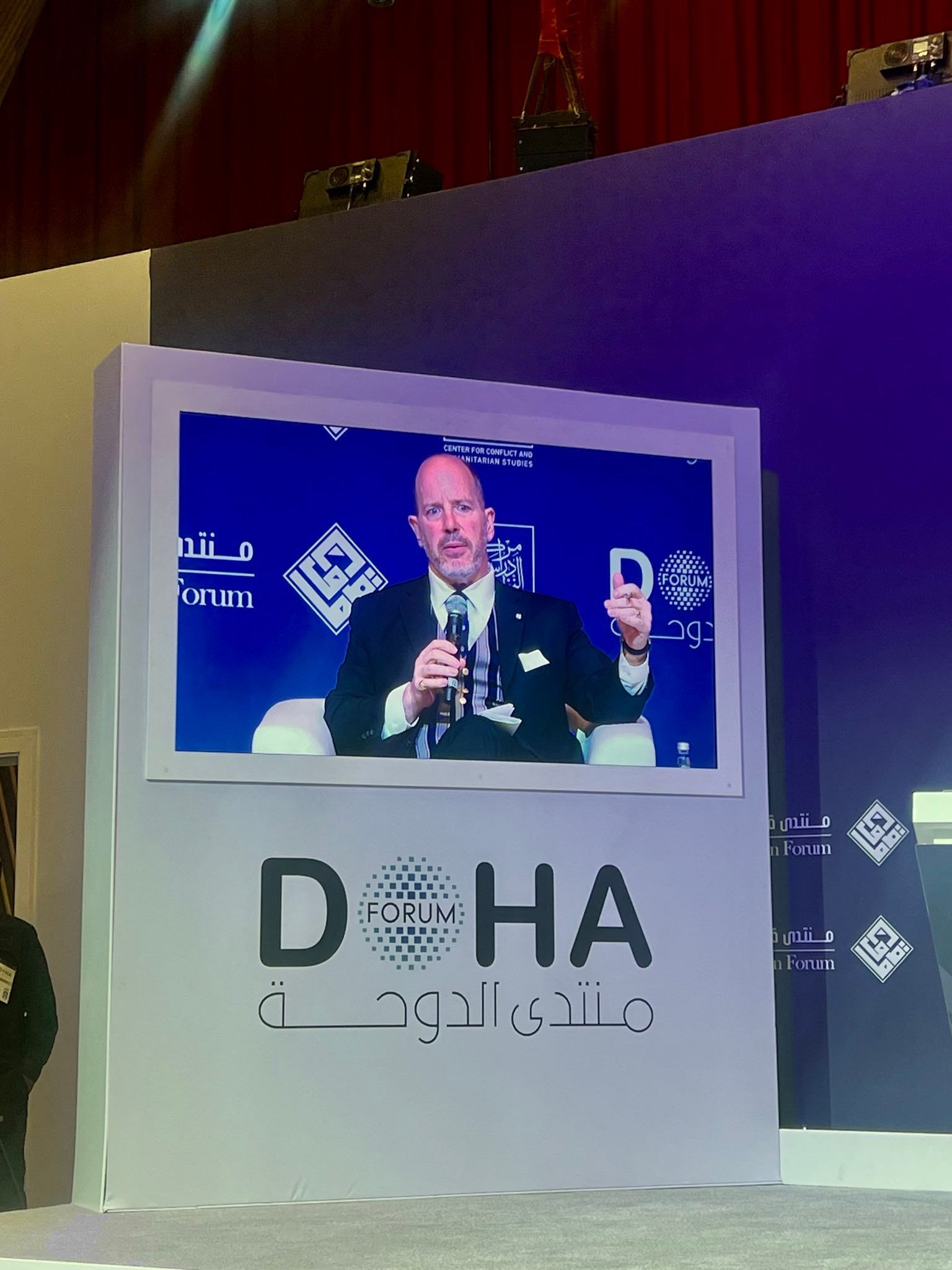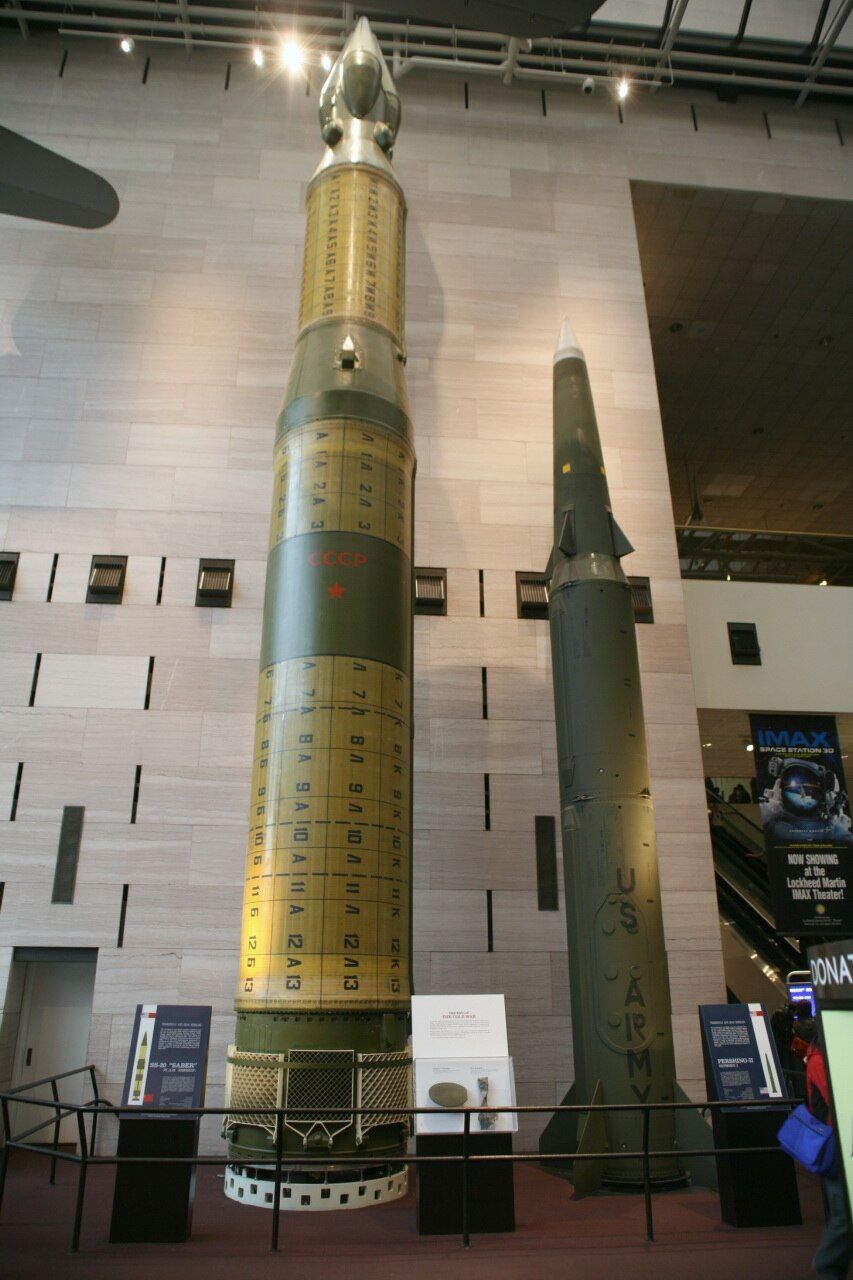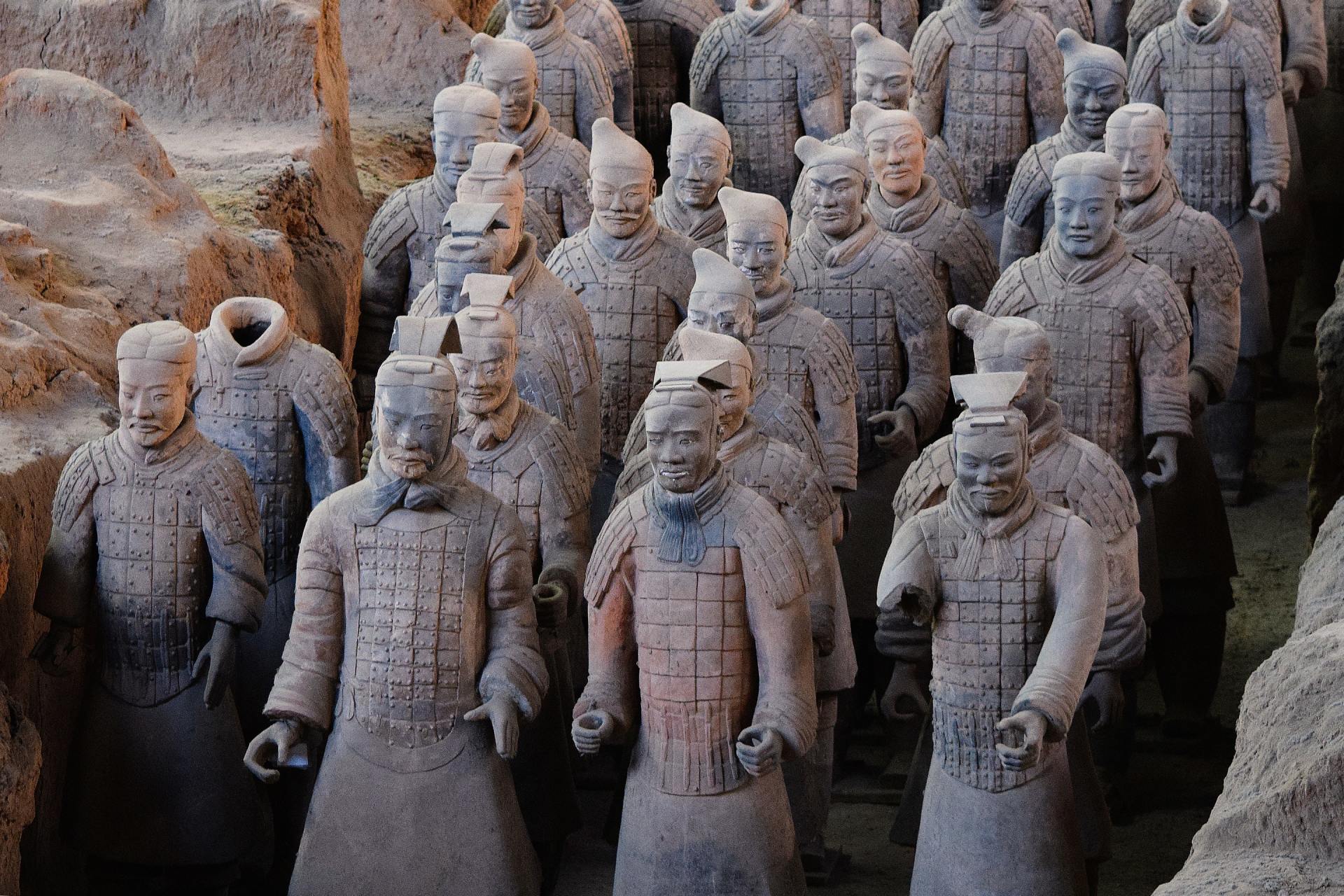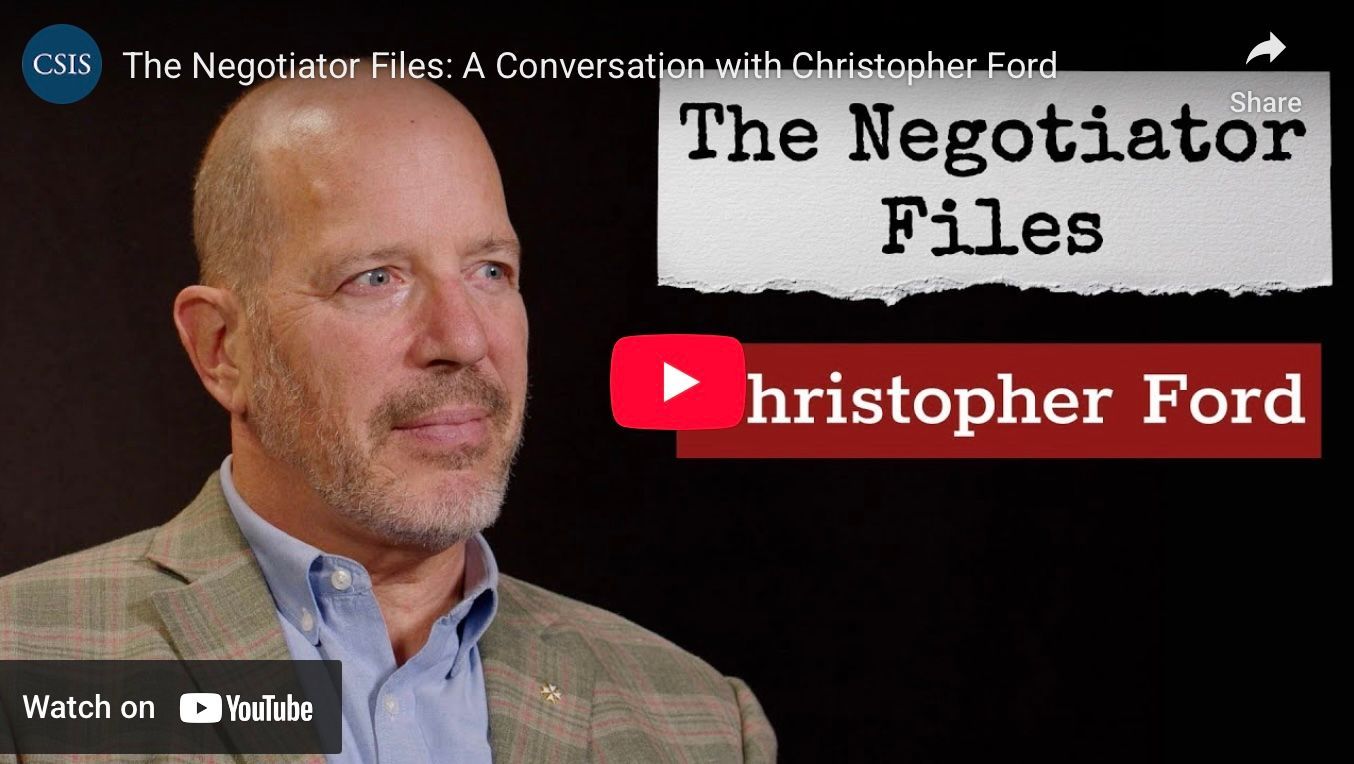Equipping Leaders for Strategic Competition Against China’s “Leverage Web”
Below is the text on which Dr. Ford based his remarks at the Johns Hopkins University's Applied Physics Laboratory on July 18, 2024.
Good afternoon, everyone, and thanks for inviting me to speak at this showcase event for the Applied Physics Laboratory’s (APL’s) Asymmetric Operations Sector (AOS). It’s been a pleasure to do some work with AOS over the last few months, and I look forward to a continuing relationship.
Naturally, my remarks today are only my personal opinions, and don’t necessarily represent those of anyone else. Nevertheless, knowing AOS’ keen interest in supporting a range of federal sponsors in the critical arena of strategic competition with the People’s Republic of China (PRC), I thought I’d offer you some thoughts on how I think U.S. and other Western leaders can better equip themselves for such struggles.
I’ll be talking a bit today about network relationships, but before I get too far down that road I thought I’d offer a little perspective on why I think it’s so important to understand the world’s dynamic networks of financial, trade, resource, supply chain, and other dependencies. I’m no complexity scientist, but I have spent my professional career in national security policy and strategy – not least as a student of Chinese policy and strategy – and I do think that a key starting point for American competitive strategy is to understand that of our most important competitor.
And in that respect, I think it’s critical to understand the remarkable degree to which Beijing’s strategy revolves around the systematic creation and manipulation of such networks. Only when that is understood, I would argue, can we really succeed in equipping our leaders for success in developing and implementing an effective counterstrategy.
To that end, what I’ll try to do over the next forty minutes or so will proceed in four steps.
- First, I’ll offer you a sketch of what I believe to be the basic model of social control that underlies the Chinese Communist Party’s (CCP’s) approach to maintaining its authoritarian and unaccountable power over the Chinese people.
- Second, I’ll offer you a glimpse of the ways in which I think the CCP has been trying to export aspects of that model, by degrees, to the rest of the world, in hopes of “training” foreign leaders and societies into stronger and stronger habits of instinctive conformity with what the CCP desires to help reshape the international order into one in which such Sinocentric deference has been generalized into a key organizing principle.
- Third, I’ll try to explain the central role that creating and manipulating dependency networks plays in this PRC strategy with reference to some recent academic work on network topography and the ways in which it can potentially be “weaponized” as a coercive tool.
- And then, fourth and finally, I’ll suggest at least one way in which I think clever folks such as you bright lights here at APL can help equip Western leaders – and indeed, any other leaders around the world who prize the preservation of their national autonomy and sovereignty in the face of Chinese coercion and manipulation – to be more effective in responding to the China challenge.
That’s a lot to cover, but let’s give it a try.
I. The Cybernetics of CCP Social Control
Let’s start with something known as the “social credit score” system in China. It’s very much still a “work-in-progress” effort, more completely built out in some regions than in others. Nevertheless, it’s a remarkably sophisticated – and sinister – method of elite social control over ordinary citizens, and apparently a fairly effective means of buttressing authoritarian power.
In this vision, citizens’ behavior is monitored and recorded pervasively enough that their everyday socioeconomic privileges and opportunities can be adjusted on an ongoing basis depending upon how closely they conform to CCP expectations in any way the Party feels to be important – and, most of all, in matters of politics and politically-relevant social interactions. If an individual engages in anything that the CCP deems to be disharmoniously “antisocial,” for instance, he or she might start to have problems getting high-speed internet connections to work well, obtaining a loan, getting permission to travel, or even using public transportation or accessing social services. As I pointed out in a law review article last year, the point is not to administer punishment to the offender per se. It is to train “disharmonious” citizens into “harmonious” conformity with Party expectations, and all those around them.
Thus, domestically, the CCP’s tools of discipline and its massive surveillance architecture work together to create social incentive structures that encourage ordinary people always to be policing themselves with an eye to what they understand the CCP would want. Such generalized societal self-policing is more efficient, and more scalable, than traditional methods of direct totalitarian direction and control.
And, as pointed out in a 2022 book by Josh Chin and Liza Lin, this approach has explicit roots in cybernetic theory, going in some ways back to a Chinese scientist by the name of Qian Xuesen who worked in the West for a while and became fascinated by Western scholarship in cybernetics. His disciples in China developed a concept of “social cybernetics,” through which they claimed it would be possible to solve problems in the “open complex giant system” of Chinese society. In some ways, the modern effort to develop a “social credit system” – also inspired in part by financial credit score systems developed by Western banks to assess financial credit-worthiness – is the result.
II. Creating and Manipulating “Leverage Webs”
But this isn’t just a domestic model, in which the CCP aims to “harmonize” away independent thought and dissent. The CCP has also been trying to export aspects of this model to the rest of the world, by degrees, in hopes of shaping China’s security environment increasingly into a reflexively Sinocentric form.
As I argued in my recent law review article, one sees the use of this leverage web approach in the PRC’s employment of economic pressures to impose aspects of its own domestic censorship overseas even against foreign citizens and companies – from airlines to movie studios, and from lawyers to celebrities – who increasingly face CCP “punishment” even for merely saying things CPP leaders find disagreeable. In fact, even entire countries can now face collective chastisement for failing to conform to Beijing’s political demands, as Australia and Lithuania have already experienced.
Already, the lure of profits in the China market – and the risk of being cut off from them should the CCP become unhappy with you – has also long made important segments of the Western business community eager proponents of deeper relationships with the PRC and hence its ruling regime. This eagerness, in turn has encouraged U.S. policies that tend give the CCP even greater leverage over us by making dynamic sectors of our economy more dependent upon maintaining the Party’s goodwill.
You can see how this risks creating something of a “vicious circle” effect of accelerating dependency, which is itself a kind of system effect created by the positive feedback loop of business community greed at the prospects of making money in China irrespective of the strategic consequences. The COVID pandemic and the CCP’s own penchant for too-obviously abusing such relationships – along with the Trump Administration’s success in pivoting American national security policy toward strategic competition with the PRC – seem have slowed this curve, impeding the CCP’s ambition to make China, in economic terms, a loose analogue to the “hyperscaler” technology firms that dominate the Internet for analogous positive-feedback “more success to the successful” network-topographic reasons. But it’s a real dynamic nonetheless, and China hasn’t been shy about trying to exploit it.
Not unlike the ways in which the “social credit system” aims to “train” ordinary Chinese into following the CCP’s commandments, these economic pressures aim to “train” foreign leaders and societies into stronger and stronger habits of instinctive conformity with what the CCP desires. This is a concept I call China’s “leverage web” strategy, and it’s a key part of Beijing’s approach to shaping the international environment.
III. Interdependence and its Weaponization
So that’s my take, at least, on the CCP’s ambitious strategy to train all of us into habits of supposedly “harmonious” conformity with the CCP’s wishes. It’s a strategy that has had a great deal of success over the years, and it was employed especially successfully during the period during which the PRC generally followed Deng Xiaoping’s famous admonition to his countrymen to “bide your time and hide your capabilities.”
That is, manipulating “leverage webs” supported the CCP’s strategic plan for China (a) to build up its strength in anticipation of confronting the West and the rest of the world with its power, but yet (b) to carefully conceal that power until the point at which the country was ready to reveal it. Until that time, Beijing needed to conceal both its strength and its global ambitions behind a cloak of misdirection, manipulation, and efforts to encourage strategically myopic motivated reasoning among Western elites and publics. “Leverage webs” were a powerful tool to help achieve this.
Today, China’s “leverage web” approach still supports that grand strategy even as the CCP’s ambitious hopes for Sinocentric world order have become increasingly clear and the country neither “hides its capabilities” nor “bides its time” any longer. Even now that China has outed itself as a strategic predator, there remains value for Beijing in being able to encourage others to believe that acquiescing to its demands tends to be profitable, and that opposing its designs tends to be painful.
But let’s shift, for a moment, from the strategic to the theoretical, for there’s an interesting body of literature that can help us understand the conceptual foundations of this strategy by highlighting the ways in which the topography of a relational network can create opportunities to “weaponize” its structure as a coercive tool.
I’m referring to the phenomenon of “weaponized interdependence” as described by Henry Farrell of Johns Hopkins and Abraham Newman of Georgetown, in a 2021 book they co-edited with Daniel Drezner of Tufts.
To be sure, the phenomenon of exploiting a dominant position in a relational network is hardly new. History buffs, for example, may recall Great Britain’s relative success during the First World War in leveraging London’s centrality in the global financial and commercial networks of the period – not to mention its central position in that era’s underwater telegraph cable network – to craft an economic warfare strategy to isolate and impoverish its military adversaries in Germany and Austria-Hungary. More recently, U.S. leaders were able to take advantage of an analogous degree of network dominance in developing the tools of American financial sanctions recounted by my former George W. Bush Administration colleague Juan Zarate in his 2013 book Treasury’s War, which have been used enthusiastically by every U.S. president since the 1990s.
But Farrell and Newman took the additional step of seeing such power specifically as a network effect. It doesn’t happen just anywhere, in other words, but only where the particular structure of global relationships has acquired a pronounced “hub-and-spoke” character: one huge central hub with innumerable direct connections to essentially all the other nodes in the system, and with relatively few cross-wise connections between those other nodes. One single hub, in other words, dominates the network, and there are very few ways for other nodes to engage with each other that don’t in some way go through that hub.
This helps explain the persistence of such structures over time, as well as the difficulty players on the “spokes” have in escaping such networks – for it is the tendency of certain network topographies to create “lock-in” effects that provides the “hub” with leverage when it tries to manipulate the relationship. The advantages of joining to the hub are high, as are the costs of constructing any kind of alternative network structure, since that would require somehow persuading huge numbers of players to link instead to an alternative hub that will not at first (and potentially not for some time, if ever) provide them with anything like the benefits of connecting to the big existing central hub.
As a result, players tend to get “locked in” by the structure of the network. How many of you, after all, would feel comfortable creating a search engine to compete with Google, no matter how good your coding skills? To a great degree, when networks have a pronounced hub-and-spoke structure, we tend to get stuck with hyperscalers whether we like them or not. As I see it, China wants us to get “stuck” with dependency upon China in very much this sort of way.
But let’s get back to Farrell and Newman. A key conceptual insight for them is that networks such as global finance and the Internet are networks like this, and that if you happen to be in a position to regulate access to those hubs, you have a great deal of potential power because the “exit costs” for other players may leave them no alternatives. As they put it, such an understanding of the potential implications of network architecture offers a “structural explanation of interdependence in which network topography generates enduring power imbalances among states.” The “topography of global networks” structures the availability of coercion, and when such coercive power becomes possible, they call it “weaponized interdependence.”
In their analysis, if you do end up having a dominant position within a network like this, you can use it in at least two key ways. First of all, even without actually coercing anyone, you can use such a position for informational advantage, in the sense that it can basically let you see everything that goes on in that network. You can see all this activity because it all more or less runs through you.
The second potential use of a dominant position is more directly coercive, and consists of using one’s position to exploit the “chokepoint effect” created by everyone else’s network engagement having to run through you. If you have a chokepoint advantage, you can cut off those who displease you, and they can’t do too much about it. Or, of course, you can modulate other players’ access to the network’s benefits to create behavioral incentive structures that will encourage them to act as you wish. Hence my mentioning these dynamics in the context of modern Chinese coercion strategies.
Now, in their book, Farrell and Newman focus upon the extreme case in which a very pronounced hub-and-spoke structure – coupled with a country’s possession of the institutional capacity to manipulate it – can produce considerable “weaponizable” power. As I argued in remarks at Columbia University earlier this year, I suspect that such hypertrophic cases are relatively rare, but I would wager that this kind of analytical framework is still quite useful in intermediate scenarios.
In particular, I’d say that their emphasis upon the need for a coincidence between (a) having some kind of network-topography-based advantage and (b) having the institutional capacity to manipulate that advantage points us to an important possibility. It suggests that actors might – as a matter of policy and in order to support national security strategy – seek both to accentuate leverageable network advantages and to build themselves institutional mechanisms with which to employ such leverage.
Many such advantageous network topographies were doubtless originally unintentional. One can’t really imagine a group of British aristocrats and industrialists sitting around over cheroots and brandy at a posh club in St. James two hundred-odd years ago, for example, plotting how to create a global hub-and-spoke financial network that the Empire would be able to leverage in economic warfare against its continental European adversaries in some future global war.
I’m also pretty confident that U.S. leaders did not set out to make New York the financial hub of the late 20th Century in order to permit the Treasury Department to establish an Office of Foreign Assets Control (OFAC) many years later that could thereafter use financial sanctions against international terrorists and nuclear proliferators in the 21st Century. Most often, I’d reckon, such asymmetric network topographies develop through their own dynamics, and leaders discover only later that they’ve stumbled upon a tool that can be “weaponized” for political and security purposes.
But while many of the asymmetric relational advantages that China weaponizes in pursuit of its grand strategy today doubtless emerged without a lot of planning – being, for instance, a consequence of several decades of export-driven growth and development intended to make China rich, but that had the secondary effect of placing the PRC atop a whole range of global supply chains that it could thereafter manipulate – I believe the CCP has in recent years become much more genuinely strategic about such things. One clear example of this is Xi Jinping’s “Belt and Road Initiative” (BRI), which is having only very mixed results in terms of providing economic benefits either for China or for China’s partner countries in the Global South, but which is proving very good at creating hub-and-spoke networks of infrastructural dependency that tie those partners’ economic fates increasingly to Beijing’s political goodwill.
To give another example, Xi Jinping’s concept of what’s called “dual circulation” also seems to be, quite explicitly, a strategy for protecting China against economic dependency on other countries while making them as dependent as possible upon China. According to Xi Jinping, “domestic circulation” is intended to be “the mainstay” of the Chinese economy, with industrial production increasingly shifting from export dependency to reliance upon domestic consumption.
At the same time, however, the “domestic and international circulations” are supposed to “reinforc[e] each other,” with continued export production providing what the CCP’s 14th Five-Year Plan described as “a trade powerhouse.” Together they are intended to “form a powerful gravitational field to attract global resources and factors of production … and accelerate the cultivation of new advantages to be used in international cooperation and competition.”
Yes, you heard that last part right. As the 14th Five-Year Plan said directly, the point is to give China “new advantages to be used in international cooperation and competition.” As I noted, this is a concept under which the CCP hopes to gain competitive advantage by minimizing China’s dependence upon foreign trade while still maximizing the rest of the world’s dependence upon Chinese manufactures.
I’m not enough of an economist to tell you whether this would actually work as an economic strategy. Hopefully it won’t! But it does seem clear that the CCP keenly understands the strategic advantages to be had from being able to manipulate others’ economic dependence upon you while keeping your own dependence upon them to a minimum. In effect, that’s how interdependence can be weaponized.
I very much hope it would be too much to see in this some CCP analogue to the efforts undertaken by Nazi officials in the late 1930s to prepare the Third Reich for its wars of territorial aggression by working to immunize Germany against League of Nations sanctions through the cultivation of what Adolf Hitler and Herman Goering – whom Hitler put in charge of this effort – called “blockade resilience (Blockadefestigkeit)” and “‘raw materials freedom’ (Rohstoff-Freiheit).” But I certainly can’t rule it out.
IV. Developing More Effective Responses
So what, then, can we do about all this?
For one thing, we can do more of what we have already been doing. That is, we can keep doing what the Trump Administration began, and the Biden Administration followed, in: (i) adopting policies designed to reduce U.S. vulnerability to CCP coercion by improving supply chain resilience and developing more domestic (or at least non-PRC) sources for critical inputs; (ii) identifying and leveraging the PRC’s dependencies upon the United States, such as in so-called “chokepoint technologies” in the high-technology realm; and (iii) working with our allies and partners to coordinate such approaches across the democracies of the developed world. Whoever wins our election in November, I dearly hope they will continue along these paths we began to develop in 2018.
But I would argue that there’s also more we can do to help equip our leaders for even more effective policymaking and counterstrategy, by improving the quality of the information upon which they can base their decisions in such campaigns. My own impression from working in the State Department during the Trump Administration to put technological pressure on the PRC through U.S. national security export controls is that good decision-support information is critical – but that getting solid data and being able to draw upon good supply chain and trading models is very difficult inside the government.
This isn’t just because such policy agendas can raise challenging questions that require high-stakes equity-balancing on the basis of complex “ground truth” information and sophisticated modeling of complicated real-world trading, financial, and supply chain networks, though that is certainly true. It’s also because government officials contemplating a major move have strong incentives not to signal ahead of time that such a step is coming – lest its would-be targets have time to mitigate its impact – and because reaching outside of government for information and analysis may risk just such a disclosure.
To my eye, that means there’s a real need for some kind of capability that is accessible to the government on a trusted and entirely confidential basis – perhaps even at a level able to ingest classified information – which can draw upon trade flow, commercial transaction, economic performance, and other such data to provide decision-support analysis to U.S. and other leaders seeking to identify trade, resource-flow, commercial, or other dependency relationships relevant to China that are (or could become) subject to coercive manipulation.
This, it seems to me, would hugely assist U.S. decisionmakers in the development of counterstrategy against the PRC’s “leverage web” approach. For one thing, it would help them do more to identify, to understand, and – working with allies and partners – to counter Chinese efforts to build such webs around the world. It might also help us identify, or even create, opportunities to turn the tables on Beijing and use such leverage-web approaches ourselves, as part of our own competitive strategy to preserve the sovereign autonomy of all nations against self-aggrandizing Chinese coercion.
All this makes the development of such a capability sound to me like rather a no-brainer, but as far as I can tell – now from outside government – it is still the case that little such capacity currently exists. That’s why I’m so pleased to be able to talk about these issues with you folks at APL, not only because your skillsets are in many ways exactly what one would need in order to build such a capability and offer such services – including at the classified level – to a whole range of federal sponsors in support of U.S. competitive strategy, but also because you already have a tremendous track record of trusted support to American national security decision makers going back all the way to the Second World War.
V. Conclusion
So that’s Chris Ford’s two cents’ worth, anyway. So, just to recap, I do think China has a coherent and fairly sophisticated theory of social control behind both its domestic repression, and behind its increasing effort also to train the rest of the world to behave in ways more congenial to the CCP and tolerant of the Party’s dangerous global ambitions. This approach builds upon cybernetic concepts, and I think it can be usefully understood through the prism of the growing literature that now exists on the “weaponization of interdependence.”
Most importantly, however, this Chinese approach can perhaps also in many ways be better met and countered through the more sophisticated incorporation of these sorts of concepts into our own national security and foreign policy decision-making and that of our allies and partners. If you ask me, APL can play an important role in helping make this possible.
If you are able to help in these regards, in fact, there ought to be lots of people who will want to look to you for such support, not just in the U.S. Government, but also farther afield. After all, the kind of “harmonious world” that the CCP envisions creating – one explicitly modeled on the so-called “harmony” of China’s domestic system of repressive governance – is a Sinocentric world of CCP-deferential conformity that no self-respecting member of a free, sovereign national people should want to live in. If you can find a way to empower the development of more effective counterstrategy through the development of such a network-analytical decision-support capability, you ought to have many opportunities to use it, and many partners with whom to work.
Thanks!
-- Christopher Ford









